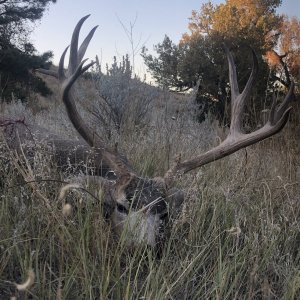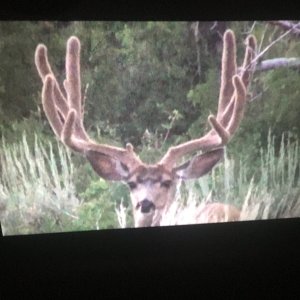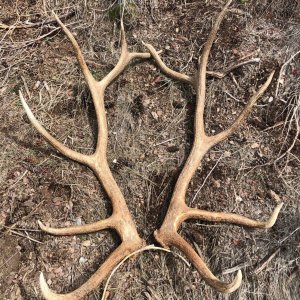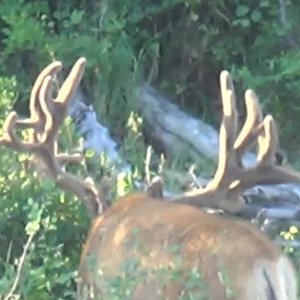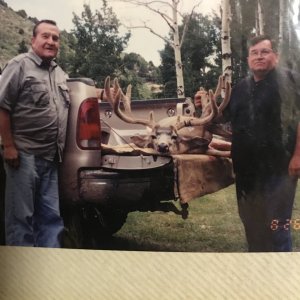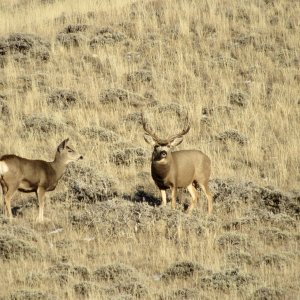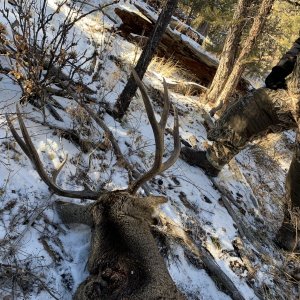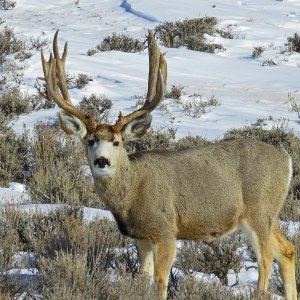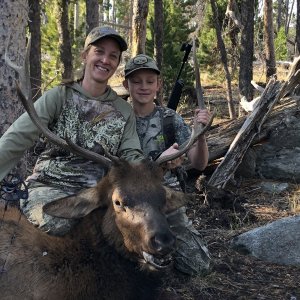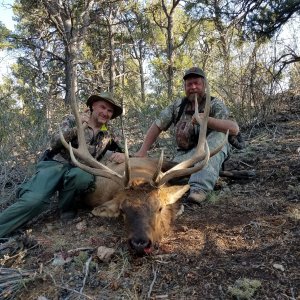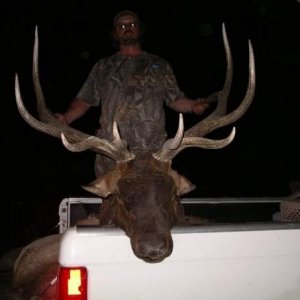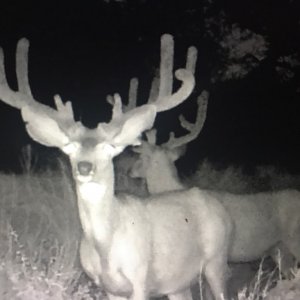LAST EDITED ON Feb-04-16 AT 01:41PM (MST)[p]
LAST EDITED ON Feb-04-16 AT 12:46?PM (MST)
Deer have wintered in my yard for 40 years, that I know of, and probably before I got here too. Their numbers fluctuate, they trend up and down. Since they started to remove extra coyotes off this unit, and the back to, to back, mild winters, the number of deer in my yard are trending up.
BobCat's right, these yard deer move through my yard in the evening and morning in during late fall, to and from the alfalfa fields. So......"live" but dormant alfalfa is suppling "some" of their diet. Deer choice alfalfa, it's not because that's all they can select from, in this area. I've heard that deer eat alfalfa like kids will choice candy over vegetables and suffer malnutrition because of their poor choice. I'm more inclined to believe deer have a natural, built in, instinct to eat what they need to survive. I could be wrong, I don't have a four year degree in mule deer studies.
(Six deer just walked past my patio door, and are eating the pine needles off my Austrian Pines in the back of the house.

Oops, there go two more! )
With a picture, it didn't happen?
After we get snow on the alfalfa fields, the deer stop feeding there. Even when the snow melts, they just don't seem to go back into those feeds as much. They will often revert to hay stacks after the field alfalfa freezes or gets snow on it, as I said, even after the snow melts, they don't seem to feed on it much, after that.
Would they, if they were really hungry, I don't know, because they aren't hungry, unless those same fields are under a foot or two of snow. So they can't get down to find food there, even if they are starving. If that makes sense.
So.......if they eat field hay, before it freezes or gets snowed on, and then switch to the dry, bailed hay, in deep winter (Jan. and Feb.) what is the danger in putting out alfalfa bails for deer, in really heavy snow or ice crusted over conditions?
I understand the abrupt "change in diet" statement claims but it's pretty hard for me to watch any animal starve to death in my yard. At some point, I'm inclined to "try something". And.........call me an ignorant sceptic if ya like, I've seen plenty of "proven biological science" disproven (made that word up. ;-) ), over the years. Often, if things are repeated often enough, they become true, whether they are or not.
As to the concern of "pulling" unnatural numbers of deer together and creating a potential petri dish for a deadly spread of death by disease, I'm not buying that, as a common phenomena either. "COULD" it happen, yes. "COULD" a pack of wolves show up and kill'em all yes, but it's highly unlikely. "COULD" is word that is used far to often to put fear in our hearts. In some natural winter ranges there are hundreds of deer/elk wintering in close proximity.
Secondly, deer don't have telephones, they can't call other deer, a mile away, to tell them there is food over here, come on over for dinner. A herd/family of deer in one canyon can be starving to death, while another herd/family of deer in the next canyon over is doing just fine. Sure, deer that bed together, travel to and from feed areas to get feed and then get spread out, will, congregate on a "good spots" when feed gets hard to find, I get that, but it takes years of conditioning, in fact, years and years of supplementing feed before deer or elk become "dependent" on the supplementation process.
If you feed deer in staving winters, and stop feeding them, when winters are not causing them to starve, they will quickly revert back to foraging naturally. The only way I've ever seen big game become dependent, year after year, on supplemental feeding, is when it's done for years and years in a row, be it good or bad winters. In those situations, herds/families of animals become "trained, from birth to death" where and how to obtain food during "all winters".
If you don't believe it, during a really bad winter, put a couple of hay bails out where deer are bedding. Then, drive a mile a way, where there are no deer tracks and put out a couple of bails. The bails close to the bedding deer will get eaten. No deer, starving or otherwise will find or eat the hay bails a mere mile away, over even a half mile.
Further, feed deer for a winter one year, and skip the next, I guarantee you the deer you fed last year will not starve to death, they will very quickly adjust back to natural foraging. Now, if you feed them every year, the size of the herd/family will grow and they'll come back year after year.
To get deer or elk throw a single bad winter or even two, by providing supplement feed is absolutely the way to manage big game, in my opinion.
Well.......you asked for opinions and I'm lousy at "one liners".

DC

